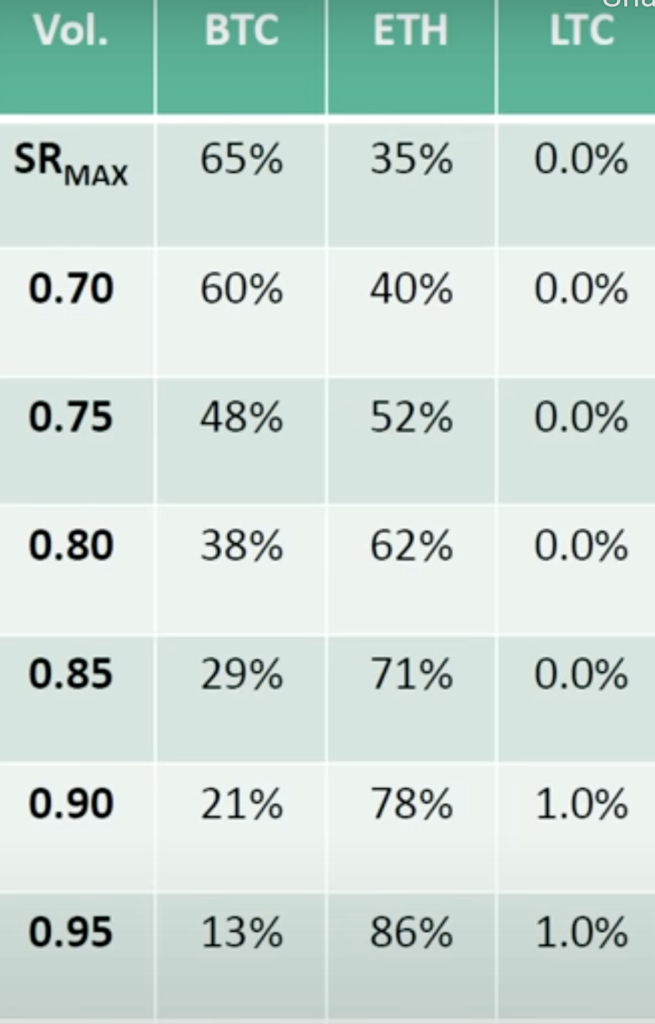There are several ways to build a crypto portfolio. The traditional method is to use the modern portfolio theory based on risk-adjusted returns. Another way it to use correlation clusters. A last way is to simply to start low risk (i.e: Bitcoin) and increase the risk as you understand the space better (i.e: altcoins).

1. Build a risk-adjusted-return based portfolio using the Sharpe ratio
Building a portfolio based on the Sharpe ratio is basically defining a basket of cryptoassets first (1), then decide your level of risk or volatility you can tolerate (2) and the return you’re willing to achieve (3). For a given (2) or (3) there is an exact and unique repartition of assets from (1) you will need to buy.
Here is an example of Ben Cowen with a basket of Bitcoin, Ethereum and Litecoin. He is giving you different weightings based on your risk tolerance:
Giving the following potential repartitions, less risky at the top, more risky at the bottom:

It’s pretty cool stuff and give you a sense of what is a low-risk-low-return and high-risk-high-return.
I have to admit that I’m not a big fan of this method because it’s based on PAST performances. Also, the theory heavily assumes that “risk=volatility”. This “risk=volatility” trader definition is where I disconnect, for me the real risk is to be stable and loose 15% a year due to inflation. However, in this theory, such an asset is not risky at all.
Finally, you will see you staking rewards flow to your cold wallet.
2. Build a portfolio based on correlation clusters
How about identifying correlation clusters, like I did in this model?
Back then, I was suggesting 3 clusters with weak/medium/high correlation to Bitcoin with an equal amount of money invested in each cluster.
Weak correlation:

Medium correlation:

Strong correlation:

3. Build a portfolio starting with low risk and slightly increase it
Another way is to start a portfolio with Bitcoin only, then move to more risky asset slowly with time. Raoul Pal does that.
He buys Bitcoin in the bull market. Then, he buys the higher risk assets (i.e: altcoins) in the middle of the bear market to generate a massive amount of alpha when the market takes off again.
Listen to his explanation at the timestamp set below:
4. Conclusion
We’ve presented 3 methods for portfolio allocation: sharp ratio, diversification clusters and dynamic re-allocation based on the market trend (bull market/bear market). I’m personally focusing on the third one and currently massively buying very cheap altcoins hammered by the bear market to build a crypto portfolio. What will YOU do?
Thanks for reading.
Disclaimer: this is not financial advice
